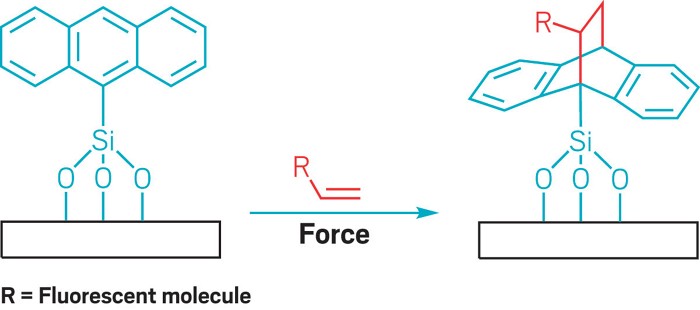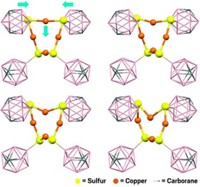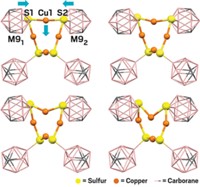Advertisement
Grab your lab coat. Let's get started
Welcome!
Welcome!
Create an account below to get 6 C&EN articles per month, receive newsletters and more - all free.
It seems this is your first time logging in online. Please enter the following information to continue.
As an ACS member you automatically get access to this site. All we need is few more details to create your reading experience.
Not you? Sign in with a different account.
Not you? Sign in with a different account.
ERROR 1
ERROR 1
ERROR 2
ERROR 2
ERROR 2
ERROR 2
ERROR 2
Password and Confirm password must match.
If you have an ACS member number, please enter it here so we can link this account to your membership. (optional)
ERROR 2
ACS values your privacy. By submitting your information, you are gaining access to C&EN and subscribing to our weekly newsletter. We use the information you provide to make your reading experience better, and we will never sell your data to third party members.
Reaction Mechanisms
When molecules just need a push in the right direction
Scientists pull apart the kinetics of forming bonds mechanochemically
by Brianna Barbu
June 16, 2023

Using a physical force such as grinding to drive a reaction, known as mechanochemistry, has gained attention in recent years as a greener alternative to potentially wasteful solvent-based methods. But a deep understanding of how force-driven bond making works and how to selectively control it has proven elusive.
In a new study published in Science, researchers set out to systematically probe how force affects the kinetics of Diels-Alder reactions (2023, DOI: 10.1126/science.adf5273). They found that it takes only a little bit of pressure to nudge the molecules into action.
“By bending the molecule, you make it incredibly reactive,” says Adam B. Braunschweig from the the City University of New York, who led the work.
The researchers chose the Diels-Alder reaction because of its well-known, one-step mechanism. They used anthracene as the diene component and four different dienophiles, only one of which reacted with anthracene when no force was applied.
Using an atomic force microscope (AFM) attachment called a polymer pen array, the researchers stamped dienophile-loaded ink onto a surface coated in anthracene. The technique gave them precise control over the force applied and how long the tips were in contact with the surface. And it was also high throughput: the stamp’s 900 tips could carry out 30 repeats of 30 different amounts of force in a single run. To run that many trials in solution, “these experiments would have taken us years. We do it in an afternoon,” says Braunschweig.
The dienophiles and products were fluorescent, so the researchers could determine reaction rate constants and activation energies by measuring fluorescence intensity as a function of force and time.
They found that force made the biggest difference to the rate the higher the activation barrier was. But it still only took less than 1 MPa of pressure to push even their most sluggish dienophile to react. “You squeeze your fingers together and you’re already applying more force than you need to drive a reaction,” says Braunschweig.
The researchers found that the mechanically-driven reaction rate was more than 1,000 times more sensitive to pressure applied in a single direction by the AFM, compared to reactions run under hydrostatic pressure, which pushes from all sides at once. The researchers attributed this to directional force bending the molecules and lowering the energy barrier to reaction. They backed up this conclusion with computations.
Braunschweig says that his team’s findings suggest that mechanochemical conditions could come in especially handy for reactions where the barrier is too high for solvent-based conditions. He expects that the kinetics of giving reactions a mechanochemical boost could hold true for mechanisms other than Diels-Alder as well.
Roman Boulatov, a mechanochemistry researcher at the University of Liverpool who was not involved in this study, says the work presents “potentially a very tractable system to study something that is intractably complex” but that there are still many open questions. He would like to see future work investigate if these findings translate to the grinding and milling conditions that mechanochemical reactions are usually run under.
Braunschweig says the challenge in organic synthesis is no longer whether a molecule can be made: it’s how, and how sustainably, to make it. He hopes that his work will help address that challenge. “Mechanochemistry really promises to revolutionize how organic chemistry is done.”





Join the conversation
Contact the reporter
Submit a Letter to the Editor for publication
Engage with us on Twitter